Peter Aldhous with another great interactive for New Scientist.
Are African-Americans More Vulnerable to Climate Change? ∞
J. Marshall Shepherd, president of the American Meteorological Society, writing for Ebony:
Climate change is one of the greatest environmental challenges we face today and this will not change in the years to come. In 2004, the Congressional Black Congress Foundation (CBCF) issued a report entitled, “African Americans and Climate Change: An Unequal Burden” and more recent studies continue to sound this warning to the African American community. One can only look to Hurricane Katrina and New Orleans to get a glimpse of this reality.
But why is climate change affecting African Americans disproportionately?
What I learned from the blizzard
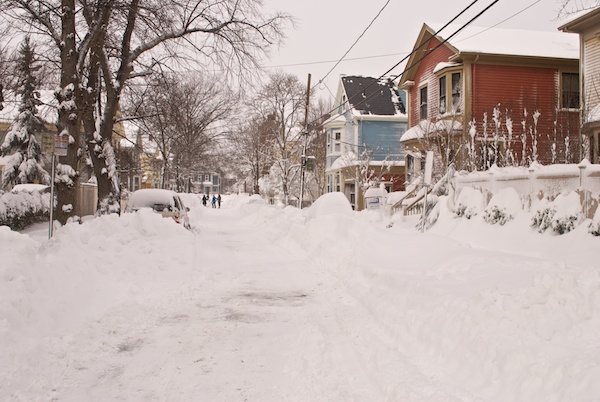
Snowfall has many magical qualities, among them the ability to hush a bustling city and, in sufficient quantities, make time stand still. This past weekend’s blizzard did just that—it stopped life in its tracks. Everyone’s plans went out the window (and landed in a mounting drift, I assume). Meanwhile we all sat—contently I hope—waiting out the nor’easter.
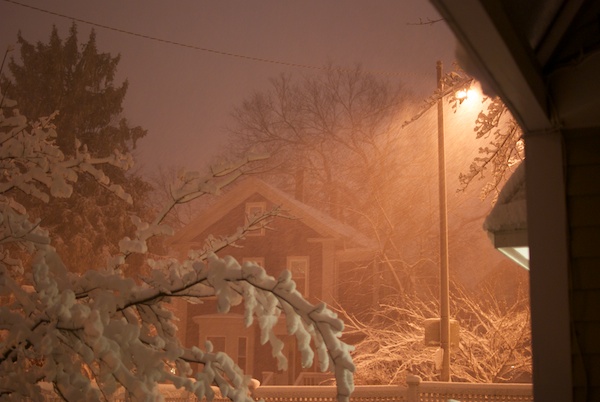
As the night went on, the temperature sank and the wind howled, blowing the ever fluffier stuff into smooth scallops and pointy tufts.
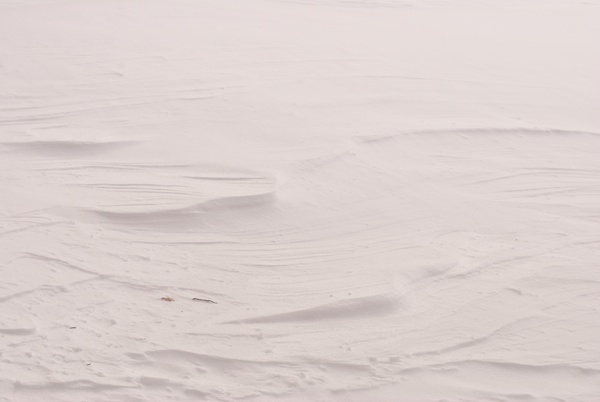
When the sun finally rose, many of us were surprised to find that time hadn’t just stopped, it had retreated. You see, the evening before the governor had banned car travel in Massachusetts. That left the streets to snowplows and first responders and, in the morning, the people. By midmorning, the roads around my house in Cambridge resembled what they must have looked like when they were first platted hundreds of years ago. Without the horses of course. People were out in droves, shuffling down the middle of the street on their tour of the neighborhood.
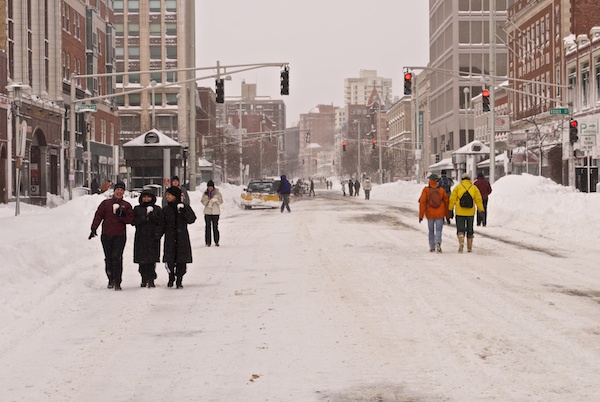
Cambridge has its share of pedestrians, but not like this. This doesn’t happen on a normal morning. But Saturday morning, there was plenty of novelty to draw people into the street, including the chance to literally be drawn into the street and not worry about being run over. That and the snow, piled high in magnificent masses.
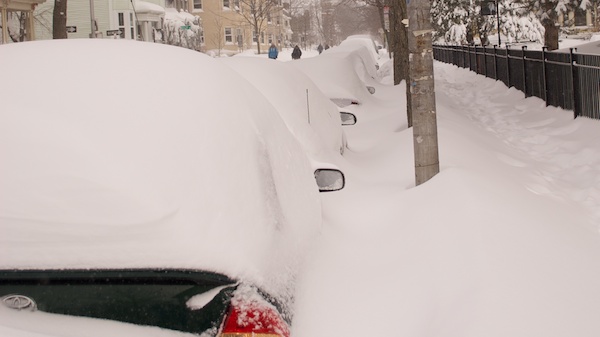
As people strolled, they stopped to chat. With nowhere to go and no schedule to keep, everyone was a bit more jovial than normal, despite the monumental amount of snow to move.
The streets were cozier, too. The plows had cleared what they could, which is to say not nearly everything. Intersections had quirky, nearly unrecognizable new boundaries. Blizzards, I’m convinced, are thinly disguised urban planning lessons. Watch where cars and plows go during and after a blizzard and you’ll see exactly how much roadway you need and not a foot more.
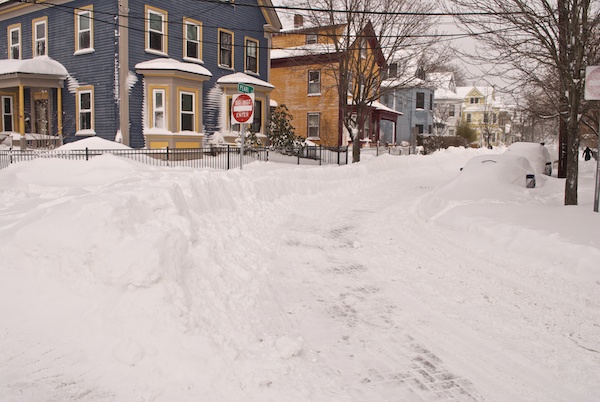
Life is slowly returning to normal. Traffic is up, even if travel speeds aren’t quite. The asphalt is showing, but many sidewalks are not. In a week or even a few days, this will be nothing more than a fond memory.
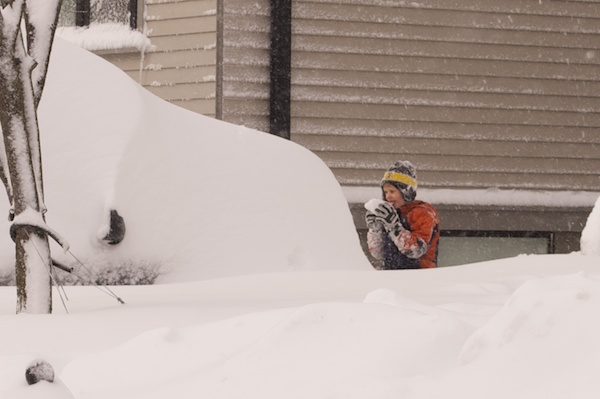
Photos by Tim De Chant.
Landsat 8 reaches orbit ∞
Landsat 8, formally known as the Landsat Data Continuity Mission, successfully reached orbit today. If all goes well during the break-in phase, the new satellite will continue what is the longest-running Earth observing program.
What Do Urban Sounds Do to Your Brain? ∞
Jennifer Barone, writing for Discover Magazine back in 2009:
We live in a sonic world, immersed in vibrations that stimulate microscopic hair cells deep inside our ears. This unseen energy influences our mood, our learning, even our health. We experience it as comforting music, as information-laden speech, or—all too often—as irritating noise, a by-product of our increasingly mechanized world. Despite all the ways sound affects us, we often let it slip unnoticed into the background of our lives. Hoping to understand it better, I set out to explore the mysteries of sound in the course of one day.
Landsat 8 to the rescue ∞
Jeff Tollefson, reporting for Nature:
With the passing of Landsat 5, the future of the world’s longest-running — and perhaps most influential — set of data on global change rests with Landsat 8, which is scheduled to launch next week from Vandenberg Air Force Base in California.
Reading this will change the climate

It’s no secret that burning fossil fuels is changing the Earth’s climate. Emissions are bolstering the planet’s greenhouse effect, which is raising temperatures around the world. But it’s not an even warming, and neither may it all be entirely attributable to emissions alone. The heat produced from burning fossil fuels may play a role in climate change, particularly its geographic inconsistencies.
I admit I was a bit surprised to learn that in a recent study in the journal Nature Climate Change. The Earth’s atmosphere is massive—the heat we dump by burning coal, oil, and gas seems minuscule in comparison. Picking up on such a signal would be like claiming you noticed that the pool got warmer because some kid peed in the other end. Not very plausible, at least until you realize that the world has thousands of cities, each giving off a small amount of heat. It’s like thousands of kids peeing in a really big pool. Eventually, you’ll notice something. Each city (or kid) on their own may not have a noticeable effect, but combined, they can alter the distribution of warming, perhaps significantly. It’s the butterfly effect applied to the 21st century.
Global energy consumption was 509 exajoules in 2009, down slightly from 2008 (a slumping economy will do that). That sounds like a lot, but it pales in comparison—well less than 1 percent—to the amount of energy the Earth’s oceans and atmosphere move around the globe every year.
But our energy consumption—and production—isn’t evenly distributed. We make a lot of it near cities and consume nearly all of it in them. The authors of the paper sampled 86 points in the Northern Hemisphere where energy use exceeded 0.4 watts per square meter. That’s pretty sensitive, especially if you consider that Tokyo, for example, can consume up to 1,590 watts per square meter on a cold winter morning. The 86 points represent only about 1.3 percent of the Earth’s surface, but about 42 percent of our total energy consumption.
The scientists plugged that data into standard climate models and ran them for a simulated century. Without the warming data, the models returned results similar to those found before. But when the point source warming from cities was added, the warming patterns more closely hewed to real world trends. For example, the new model results predicted warmer winters over parts of Canada, China, and Siberia, which the authors note “has a high resemblance to the unexplained surface temperature trend in the second half of the twentieth century by anthropogenic radiative and aerosol forcing.” What they really mean is, “Remember some of the shortcomings in previous models? We seem to have solved them.”
While at first glance it seems improbable that the heat produced by our energy consumption could affect a system as massive as the climate, it shouldn’t come as a surprise. The climate is a complex system, and any perturbation, however small, can have unintended consequences. If you want evidence, just look around. The climate is changing, no doubt about it. The more we look, the more evidence we find of our global footprint. This is just the latest example. I’m certain there’ll be more.
Source:
Zhang G.J., Cai M. & Hu A. (2013). Energy consumption and the unexplained winter warming over northern Asia and North America, Nature Climate Change, DOI: 10.1038/nclimate1803
Photo by Señor Codo.
Related posts:
You Can Never Go Back to Nature ∞
Annalee Newitz, with a wonderful piece at io9:
You cannot yearn to get back to nature if you don’t believe that you are fundamentally not a part of it.
Throughout my childhood, and in my adulthood, I never had a strong yearning to spend weeks camping or take a days-long backpacking trip. At times I thought this made me a shitty ecologist. But eventually it dawned on me why I don’t have those compulsions: I see nature all around me. I study and explore it, even when I am in the middle of the city. Newitz gets at the heart of this with poetic brevity.
Historic Gardens Can be Urban Biodiversity Hotspots ∞
Maria E. Ignatieva, writing for The Nature of Cities.
Over the two decades heritage parks in Europe have been re-evaluated and have begun to be seen as highly valuable urban biodiversity hotspots. Historical parks are not only witnesses of different historical art periods but also are refuges for rare flora and fauna. Very often they contain important fragments of natural landscapes.
What Sea Level Rise Will Mean in Boston ∞
Emily Badger, reporting for the Atlantic Cities:
Now Boston must begin to contend with the reality that it could be even more vulnerable than New York to rising sea levels. Much of Boston was historically built on land filled in and created out of estuaries and wetlands, and the ocean itself. Logan International Airport was built on man-made land. So were many of the high-end residences in the city’s Back Bay neighborhood.
Boston, like many modern coastal cities, has two classes of land in this regard—that which was initially settled and that which was built on fill. We’ve seen it play out in New Orleans and New York City. San Francisco has it’s neighborhoods built on fill, too (liquefaction during earthquakes tends to be more a concern now than flooding, though that may change).
These maps may be new for Boston, but the basic idea has been floated before. Regardless of the city, studying the historic coastlines gives good idea of which parts will be safe from sea level rise and which won’t.
External Airbags Designed to Save Cyclists, Pedestrians ∞
Clever solution. New cars are already designed with pedestrian safety in mind (it’s one reason why front ends are taller and rounder than before), but this would go a step beyond, protecting people from unyielding windshield impacts.
What rail traffic tells us about electricity generation. ∞
U.S. Energy Information Administration:
The record increase in U.S. crude oil production during 2012 and the significant decline in coal use for domestic electricity generation were reflected in the movement of those two commodities by rail last year. Crude oil and petroleum products accounted for the biggest increase in railcar loadings among commodities in 2012, while coal had the largest decline. Notwithstanding these changes, coal remained by far the dominant category of carload shipments, accounting for 41% of total carloads, compared to a 4% share for all petroleum and petroleum products combined.
Coal generation is down, though it’s not being replaced by renewables but natural gas, which is usually transported via pipelines.
Stranded on the Roof of the World ∞
Moving to evade the worst of Mother Nature may feel foreign to many of us, but for some it’s a way of life. Photographer Matthieu Paley documented the nomadic lifestyle of the Kyrgyz in Afghanistan and Pakistan as they seek out pastures for their livestock and trading for their livelihoods.
Lava consumes subdivision ∞
Speaking of retreating from forces of nature, NASA brings us this pair of images from Hawaii, where the Royal Gardens subdivision was slowly consumed by lava oozing from the side of Kilauea.
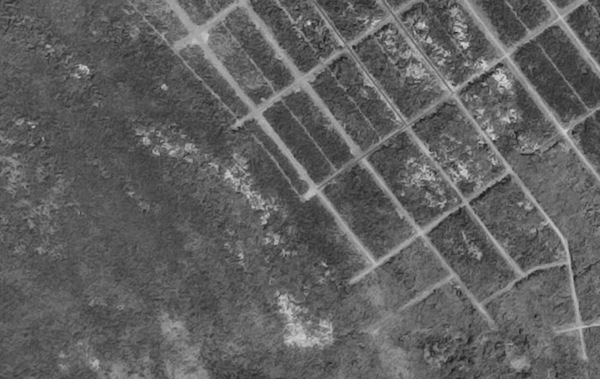
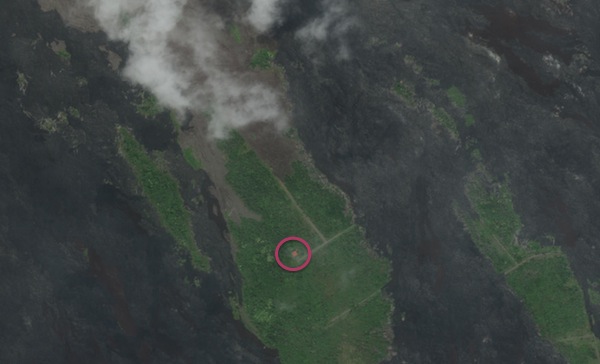
The top aerial photograph shows what the Royal Garden subdivision looked like on February 19, 1977. The grid-like pattern was a network of roads that had been etched into the forested landscape. Digital Globe’s Woldview-2 satellite acquired the second image on May 15, 2011. By then, lava had destroyed the majority of the subdivision, but a few areas remained unscathed.
The last resident was airlifted out days before lava buried his house (circled in the second photo).
Volcanic islands, and coastlines in general, are both scenic and dynamic, resource rich and inspiring. But the fact that we are drawn to—and may benefit from—living in dangerous places, we should never assume we can tame them.
Cuomo Seeking Home Buyouts in Flood Zones ∞
Thomas Kaplan, reporting for the New York Times:
Residents living in flood plains with homes that were significantly damaged would be offered the pre-storm value of their houses to relocate; those in even more vulnerable areas would be offered a bonus to sell; and in a small number of highly flood-prone areas, the state would double the bonus if an entire block of homeowners agreed to leave.
The land would never be built on again. Some properties could be turned into dunes, wetlands or other natural buffers that would help protect coastal communities from ferocious storms; other parcels could be combined and turned into public parkland.
Governor Cuomo’s plan is just a proposal right now, but I think it’s a sign that our slow retreat from the coast has begun.
Beijing Takes Emergency Steps to Fight Smog ∞
Edward Wong, reporting for the New York Times:
The Beijing government put in place emergency measures on Wednesday to try to combat thick smog that has encased the city, which the Communist Party has hailed as a showcase capital, in brown and gray soot. The measures include temporarily shutting down more than 100 factories and ordering one-third of government vehicles off the streets, according to official news reports.
Seems to me it would just be easier to enact pollution controls and be done with it. If there’s one thing businesses don’t like, it’s uncertainties like this.
China ♥ coal ∞
Bryan Walsh, writing for Time:
China is now burning almost as much coal as the rest of the world — combined.
Dolphin That Died in Canal Was ‘Chronically Ill’ ∞
Andy Newman, reporting for the New York Times:
The polluted water “didn’t help,” said Ms. Durham, rescue program director for the Riverhead Foundation. But she added, “I think the fate of this animal would have happened regardless or whether it was in the canal or anywhere else.”
Regardless of what ultimately doomed the dolphin, images of it it swimming in the toxic Gowanus were certainly powerful.
Doomed Dolphin Speaks to New York's Vibrant Wildlife ∞
Brian Switek, following up on the sad story of the Gowanus Canal dolphin for National Geographic:
Of course, New York City’s whales, seals, and occasional manatee can only skirt the city along its shores and canals. You likely won’t see a seal caterpillaring its way along Broadway.
Yet the city’s interior also hosts a strange accumulation of wildlife, including native animals that are carving out spaces for themselves in the concrete corridors and exotic species that we have introduced to city life.
What Does It Mean to Be Comfortable? ∞
Maggie Koerth-Baker, writing for the New York Times Magazine:
By shifting work from the sweltering afternoon into cooler evening hours, the siesta provided a kind of de facto air-conditioning, says Elizabeth Shove, a professor of sociology at Lancaster University in England. Getting rid of siestas makes people more dependent, during the hottest part of the day, on energy-intensive forms of cooling. Air-conditioning use in Mexico has skyrocketed since the siesta ban. In 1995, 10 percent of Mexican homes had A.C. By 2011, that figure had grown to 80 percent.
Shove studies the cultural and historical factors underlying sustainable living. Historically, she says, societies developed methods of dealing with their local climates, and those tools and behaviors became ingrained cultural customs. As the world becomes more interconnected, these customs are changing, and so is the definition of something as elemental as comfort.
The rest of the piece is just as eye opening.